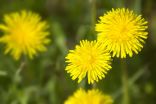(Press-News.org) WASHINGTON, June 30 -- Hantaviruses use cholesterol in cell walls to gain access into cells and infect humans, according to laboratory research published this week in mBio®, the online open-access journal of the American Society for Microbiology.
"Our work demonstrates that hantaviruses are extremely sensitive to the amount of cholesterol in the membranes of the cells they are trying to infect," said senior study author Kartik Chandran, Ph.D., an associate professor of microbiology and immunology, and Harold and Muriel Block Faculty Scholar in Virology, at the Albert Einstein College of Medicine in the Bronx, N.Y. "Cholesterol seems to control the ability of hantaviruses to fuse with cell membranes and get inside, into the cytoplasm, which is where all the goodies are to make more virus."
In laboratory experiments with isolated human cells, researchers found that multiple genes involved in cholesterol sensing, regulation and production, including key components to a chemical pathway called SREBP (sterol response element binding protein), are critical to hantaviruses gaining entry. Disrupting a chemical component of the pathway called S1P dramatically reduced the ability of hantaviruses to infect cells, although other types of viruses like rhabdoviruses (such as rabies) and alphaviruses (such as encephalitis) could still yield infection. There are no vaccines or antiviral medicines available to prevent or treat hantavirus infection, and gaps in the understanding of how the viruses enter human cells have hampered the search for therapeutics, the researchers said.
"It is conceivable that cholesterol-lowering drugs could lead to treatments for hantavirus infection," said study co-senior author John M. Dye, Jr., Ph.D., viral immunology branch chief at the U.S. Army Medical Research Institute of Infectious Diseases at Ft. Detrick, Md. "However, such drugs would need to reduce cholesterol levels in key hantavirus target tissues in a human, whereas typical cholesterol-lowering drugs like statins target primarily the liver. It remains to be seen if this can be done safely."
Hantaviruses normally affect rodents; people can contract the disease through contact with the rodents or their urine, saliva or droppings. Hantavirus strains in Europe and Asia have caused hemorrhagic fever with kidney failure, while strains in the Americas have caused hantavirus cardiopulmonary syndrome, a severe, sometimes fatal respiratory disease.
For the study, researchers stitched the gene encoding the hantavirus entry machinery into an innocuous virus, and studied its ability to attack isolated, mutated human cells. Their experiments identified seven genes that regulate cellular cholesterol metabolism that were involved in hantavirus infection; found that S1P, an enzyme critical to the SREBP pathway, is required for hantavirus cell entry and infection; and found that inhibiting S1P could hamper hantavirus infection, among other results.
Additional studies are required to better understand precisely why hantaviruses are so dependent on cholesterol, and if that characteristic is shared by other viruses in the same family, researchers said.
The work, co-authored by researchers from the Netherlands Cancer Institute in Amsterdam, was supported by grants from the National Institutes of Health; the Joint Science and Technology Office for Chemical and Biological Defense (JSTO-CBD), Defense Threat Reduction Agency; and the European Research Council.
INFORMATION:
mBio® is an open access online journal published by the American Society for Microbiology to make microbiology research broadly accessible. The focus of the journal is on rapid publication of cutting-edge research spanning the entire spectrum of microbiology and related fields. It can be found online at http://mbio.asm.org.
The American Society for Microbiology is the largest single life science society, composed of over 39,000 scientists and health professionals. ASM's mission is to advance the microbiological sciences as a vehicle for understanding life processes and to apply and communicate this knowledge for the improvement of health and environmental and economic well-being worldwide.
From our nation's founding, the Fourth of July has been synonymous with fireworks.
While many grew up learning that fireworks can be dangerous to the eyes and hands if not handled properly, fireworks also produce air pollutants, including particulate matter, that are linked to short-term or long-term health effects.
NOAA scientist Dian Seidel and Abigail Birnbaum, a student intern at NOAA, have authored a new study appearing in the journal Atmospheric Environment that quantifies the surge in fine particulate matter -particles that are two and one half microns in diameter ...
Tiny marine algae that play a critical role in supporting life on Earth may be better equipped to deal with future climate change than previously expected, research shows.
Scientists investigated the likely future impact of changing environmental conditions on ocean phytoplankton, a microscopic plant that forms the basis of all the oceans' food chains.
Phytoplankton is important for absorbing carbon dioxide from the atmosphere, while generating much of the oxygen needed to sustain life on Earth.
The study grew phytoplankton at the high carbon dioxide levels predicted ...
Greenwich, CT, 30 June, 2015 - A new paper to be published in The Journal of Shoulder and Elbow Surgery evaluates the effect that topical benzoyl peroxide (BPO), with chlorhexidine skin preparation, has on the presence of Propionibacterium acnes cultured at the time of shoulder surgery. The authors hypothesized that adding topical BPO, the active ingredient in Clearasil, to the pre-operative skin preparation would reduce the number of positive P. acnes cultures identified during surgery.
P. acnes infection is a significant problem after shoulder surgery. Residual P. ...
New research has found that the number of plant species growing just next to restored streams can take up to 25 years to increase above those channelized during the timber floating era. This is according to doctoral student, Eliza Maher Hasselquist, and other researchers from Umeå University and the Swedish University of Agricultural Sciences (SLU).
In the Vindel River catchment in northern Sweden, the main channel and most tributary streams were channelized from the 1850s to the 1950s to accommodate timber floating, which stopped in 1976. Boulders in the streams ...
Halle (Saale). The role of plant traits might be overestimated by biologists in studies on plant invasiveness. Anthropogenic factors such as whether the spcies was being cultivated proved to be more important. These conclusions were made from a study on Central European plants that were introduced by humans to North America and over time became naturalised in this continent. Naturalisation of new plant species, a process that makes it a permanent member of the local flora, most strongly depends on residence time in the invaded range and the number of habitats occupied by ...
COLUMBUS, Ohio - Nanoparticles packed with a clinically used chemotherapy drug and coated with an oligosaccharide derived from the carapace of crustaceans might effectively target and kill cancer stem-like cells, according to a recent study led by researchers at The Ohio State University Comprehensive Cancer Center - Arthur G. James Cancer Hospital and Richard J. Solove Research Institute (OSUCCC - James).
Cancer stem-like cells have characteristics of stem cells and are present in very low numbers in tumors. They are highly resistant to chemotherapy and radiation and ...
A pilot program designed to encourage mom and pop carryout shops in Baltimore to promote and sell healthier menu items not only improved eating habits, but also increased the stores' gross revenue by an average 25 percent, new Johns Hopkins Bloomberg School of Public Health research found.
A key finding, published in the July/August issue of the American Journal of Health Promotion, is that not only were healthier options expanded in low-income, African-American neighborhoods, but that storeowners actually made money selling these foods -- which the researchers say should ...
Health care education researchers, led by Dr. Julian Archer from Plymouth University Peninsula Schools of Medicine and Dentistry, have penned a heartfelt editorial in The BMJ calling for more research funding to support the evidence base for medical training.
Without it the authors claim that the future of training for doctors, nurses and other health care professionals will be 'left to chance' - to the detriment of their professional development, the efficient running of health services and the ultimate benefit of patients.
The authors cite the cost of medical practitioners ...
Americans spend over $10 billion a year on products and surgery in their quest to find a "fountain of youth," with little permanent success. Botulinum toxin -- notably Botox -- which smoothes lines and wrinkles to rejuvenate the aging face has been the number one nonsurgical procedure in the U.S. since 2000. But injections of this toxic bacterium are only a temporary solution and carry many risks, some neurological.
A team of Tel Aviv University and Harvard Medical School researchers has now devised a non-invasive technique that harnesses pulsed electric fields to generate ...
BEER-SHEVA, Israel June 30, 2015 -- Older adults are using online communities to dish about the joys of sex and swap advice about keeping their mojos working, a new study by a Ben-Gurion University of the Negev researcher (BGU) has found.
"Websites geared toward older adults are providing this population with new opportunities to discuss and explore its sexuality," according to BGU's Dr. Galit Nimrod and Dr. Liza Berdychevsky of the University of Illinois at Urbana-Champaign (U of I).
According to their paper published online in the Journal of Leisure Research, senior ...


